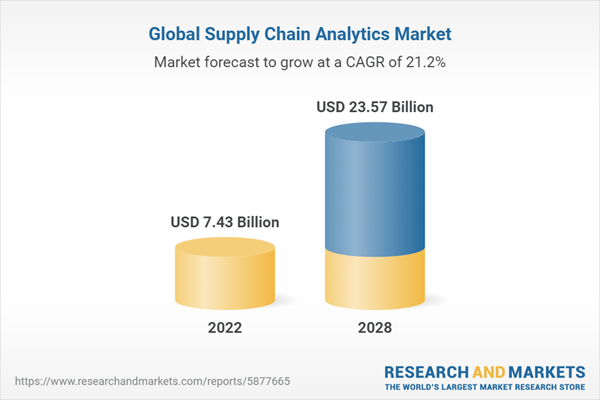Speak directly to the analyst to clarify any post sales queries you may have.
10% Free customizationThis report comes with 10% free customization, enabling you to add data that meets your specific business needs.
Factors including rising consumer demand, corrosion resistance, high toughness and flexibility, and minimal maintenance requirements are driving the market for content security. The study on the global content security industry comprehensively evaluates the market. The research thoroughly analyzes the market's significant segments, trends, drivers, constraints, competitive environment, and other essential elements.
Businesses are now incredibly vulnerable to cyber risks attacks due to the widespread use of emails and internet. Complex cyberattacks have increased the number of advanced persistent threats (APTs), which have an impact on an organization's whole IT infrastructure. Enterprises are using network and content security solutions to strengthen their network security to protect themselves from various cyberattacks. The vulnerability of these devices is increased by the expanding BYOD trend among businesses, the complexity of attacks, and the absence of internet protection in mobile devices. These are the market-driving elements for content security.
Implementation of new content security policy
The advantages of this content security policy, such as restricting the domains from which material may be loaded, and the server's ability to determine which protocols are allowed to be utilized, are driving the adoption of Content Security. A server can declare that all content must be loaded via HTTPS.A comprehensive data transmission security plan comprises not only requiring HTTPS for data transport, but also designating all cookies with the secure flag and enabling automated redirection from HTTP pages to HTTPS counterparts. A content security policy is a security standard implemented to minimize cross-site scripting and limit content injection threats. This security standard restricts the sources of user-uploaded material to only site owners. This content security policy assists users in protecting themselves from different threats by making it more difficult for attackers to inject or exfiltrate data.
Increased digitalization and IoT adoption
The increased need for IoT adoption and digitalization has successfully propelled the market. Preventative measures must be included across an IoT infrastructure to provide a well-architected end-to-end security capability. The objective for architects and developers is to build infrastructure that can resist possible cyberattacks. The extensive industry knowledge was used to develop effective security solutions that are packed with several preventative measures that are applicable to businesses in a variety of sectors.Rising Numbers of Security Threats
One of the key drivers for the content security industry is the increasing security risks. With industry-standard precision in research and excellent data quality, the report makes a fantastic endeavor to uncover significant opportunities accessible in the global content security market to assist businesses in gaining a solid market position. Buyers of the survey will get access to validated and credible market predictions, including those for the total size of the Global Content Security market in terms of revenue., This is another key factor responsible for the growth of the Content Security Market.Market Segmentation
Global Content Security Market is segmented By Type, By Application, Region and Competitive Landscape. Based on Type, the market is segmented into E-Mail Content Security, Web Content Security, and Others. Based on Application, the market is segmented into Enterprise, Municipal, Individuals and Others.Market players
Major market players in the global content security market are FirstWave Cloud Technology Ltd, Google, Inc, Cartesian, Inc, Pronet S.A, Sophos Technologies Pvt. Ltd, Cisco Systems, Inc, Barracuda Networks, Proofpoint, XEROX, Forcepoint.Report Scope
In this report, the Global Content Security Market has been segmented into the following categories, in addition to the industry trends which have also been detailed below:Content Security Market, by Type:
- E-Mail Content Security
- Web Content Security
- Others
Content Security Market, by Application:
- Enterprise
- Municipal
- Individuals
- Others
Content Security Market, by Region:
- North America
- Asia-Pacific
- Europe
- South America
- Middle East & Africa
Competitive Landscape
Company Profiles: Detailed analysis of the major companies present in the Global Content Security Market.Available Customizations
The following customization options are available for the report:- Detailed analysis and profiling of additional market players (up to five).
This product will be delivered within 1-3 business days.
Table of Contents
Companies Mentioned
- Oracle Corporation
- SAP SE
- IBM Corporation
- SAS Institute Inc.
- Microstrategy Incorporated
- Tableau Software LLC
- QlikTech International AB
- Kinaxis Inc.
- Microstrategy Incorporated
- Infor Inc.
Table Information
| Report Attribute | Details |
|---|---|
| No. of Pages | 180 |
| Published | September 2023 |
| Forecast Period | 2022 - 2028 |
| Estimated Market Value ( USD | $ 6.24 Billion |
| Forecasted Market Value ( USD | $ 17.63 Billion |
| Compound Annual Growth Rate | 18.9% |
| Regions Covered | Global |
| No. of Companies Mentioned | 10 |









